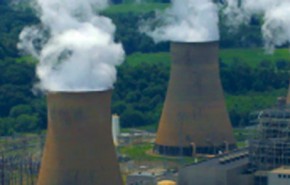Compliance with the US Environmental Protection Agency’s (EPA’s) Effluent Limitations Guidelines (ELGs) can be a daunting task that will leave many coal-fired power stations contemplating where to begin. But like many things in this world, before a problem can be solved, it must first be understood. This article focuses on how to comply with the ELG limits by first developing a precise station water balance.
Developing an Accurate Station Water Balance
ELG compliance begins with the development of an accurate station water balance. A water balance contains a complete description of all water flows into and out of the station and its associated processes. Many stations have a rudimentary water balance that was developed for permitting purposes. These water balances are often not detailed enough for use when making decisions regarding process modifications, and in most cases the water balance has not been updated since the most recent permit submission or renewal.
Inaccurate Water Balances
Water balances can also be rendered inaccurate when stations no longer operate to meet their original design capacities. Stations that were originally designed as baseload plants may now be operating as peaking facilities, typically generating power for less than 45 days per year and only in extreme hot and cold weather conditions. Changes in station operation and typical water usage patterns go hand-in-hand, and many stations have not prepared an updated water balance based on current generation schedules.
Water Balance Verifying: Tool #1—Flow Monitoring
Two major tools for updating and verifying a station’s water balance include flow monitoring and tracer studies. Flow monitoring can be accomplished by collecting and analyzing historic data from flow transmitters installed throughout the station’s pipe networks. If there are too few flow transmitters to collect useful information or the instruments are out of calibration, other flow monitoring options are available. Portable, temporary, clamp-on magnetic, or ultrasonic flow meters can be rented and installed at strategic locations throughout the station. Flowrates can also be estimated by monitoring pump suction and discharge pressures and using curve data provided by the pump manufacturer.
To remain operational, coal fired power stations must fulfill the requirements established by state and federal regulatory agencies—developing an accurate water balance is the first step towards compliance.
Water Balance Verifying: Tool #2—Tracer Studies
Tracer studies offer another alternative for plant managers to evaluate their station’s typical water flow patterns. During a tracer study, an inert, non-toxic chemical is injected into the water at a specific location, and monitoring points installed throughout the plant are used to determine the water’s path, flowrate, and residence time in each unit process or storage location.
Post Water Balance Verification
After a verified water balance has been established, ELG compliance and improved water management are right around the corner. The water balance should highlight the major water consumers (e.g., cooling tower make-up water and FGD scrubber feed water) and the major wastewater producers (e.g., cooling tower blowdown, FGD wastewater, ash transport water, ash leachate, and coal pile runoff). After the water balance is established, a water quality sampling plan should be put into effect to determine pollutant loadings throughout the station; this will aid plant managers in making decisions about future treatment options or areas that require additional maintenance due to corrosion or scale.
ZLD System Influence on Water Balance
One of the most critical items of the ELGs that directly affects water balance is conversion of existing bottom ash sluice water into a closed loop zero liquid discharge (ZLD) system. Bottom ash sluice water is used to convey ash from the bottom of boilers to a solid/liquid separation process. Hydrobins or ash settling ponds are commonly used to separate solid ash material from sluice water through settling. After this step, the bottom ash sluice water should be collected and conveyed back to the boiler for reuse. The ELGs state that any water used for bottom ash sluicing may not be discharged and must remain in a closed loop. An accurate water balance will aid planning and engineering efforts to achieve compliance.
Improving Existing Water Balance Accuracy
If a station already has a working water balance, further steps may be taken to improve its accuracy and completeness. Helpful additions to the water balance include minimum, average, and peak flowrates through pump stations and pipelines. Historical flow data should be verified periodically to ensure that operating conditions are represented accurately. Additional details should also be included for standard operation, partial outage, and full outage conditions. Each of these conditions may have dramatically different water consumption patterns, and all possible operating configurations should be evaluated.
Why An Accurate Water Balance Is Important
A detailed water balance will provide a solid foundation for water management and ELG compliance. It allows the station to identify opportunities for reuse of wastewater as makeup water to major evaporative systems, including cooling towers and FGD scrubbers. Intelligent wastewater reuse can reduce fresh water consumption and allow the station to eliminate unneeded outfalls, lessening the station’s compliance monitoring burden and reducing solids and metals discharged into receiving waters.
Fulfilling Agency Requirements and Remaining Operational
In order to remain operational, coal fired power stations must fulfill the requirements established by state and federal regulatory agencies. In addition to the ELGs, stations must also meet standards set forth in the Coal Combustion Residuals rule, Clean Water Act Sections 316 (a) and (b), NPDES permits, and any other rules that have been established for increased protection of our nation’s waterways. For each of these regulations, developing an accurate water balance is the first step towards compliance.
Contact Arica DiTullio at 412.399.5455 and find out more about GAI’s water treatment and management services—message GAI online and start the conversation about how our multidiscipline professionals can meet your unique project needs.
![]() Arica DiTullio, PE specializes in civil and environmental engineering with experience in managing multidisciplinary projects in collaboration with civil, structural, electrical, mechanical and process engineers. Her expertise spans wastewater, water quality analysis, hydrologic and hydraulic computations, site grading, erosion and sediment control, and stormwater management with a comprehensive understanding of federal, state, and local permitting and regulations.
Arica DiTullio, PE specializes in civil and environmental engineering with experience in managing multidisciplinary projects in collaboration with civil, structural, electrical, mechanical and process engineers. Her expertise spans wastewater, water quality analysis, hydrologic and hydraulic computations, site grading, erosion and sediment control, and stormwater management with a comprehensive understanding of federal, state, and local permitting and regulations.


